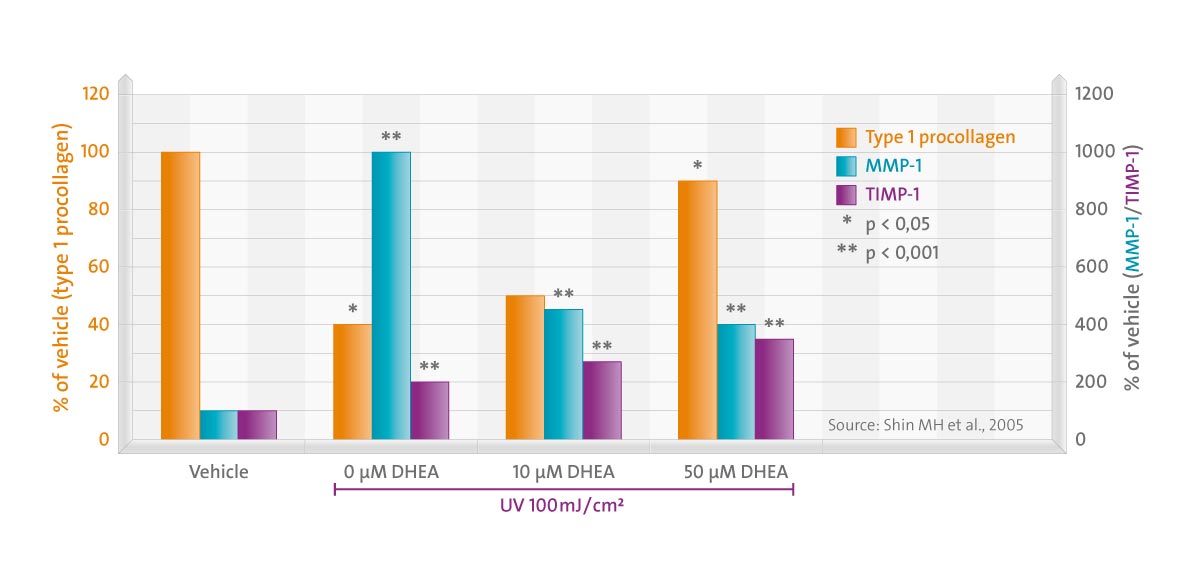Dehydroepiandrosterone (DHEA) and its sulfate conjugate (DHEA-S) are the most abundantly produced human adrenal steroids to be reduced with age. DHEA may be related to the process of skin aging through the regulation and degradation of extracelluar matrix protein.
In this study, we demonstrate that DHEA can increase procollagen synthesis and inhibit collagen degradation by decreasing matrix metalloproteinases (MMP)-1 synthesis and increasing tisuue inhibitor of matrix metalloprotease (TIMP-1) production in cultured dermal fibroblasts. DHEA was found to inhibit ultraviolet (UV)-induced MMP-1 production and the UV-induced decrease of procollagen synthesis, probably due to the inhibition of UV-induced AP-1 activity. DHEA (5%) in ethanol:olive oil (1:2) was topically applied to buttock skin of volunteers 12 times over 4 weeks, and was found to significantly increase the expression of procollagen alpha1(I) mRNA and protein in both aged and young skin.
On the other hand, topical DHEA significantly decreased the basal expression of MMP-1 mRNA and protein, but increased the expression of TIMP-1 protein in aged skin. We also found that DHEA induced the expressions of transforming growth factor-beta1 and connective tissue growth factor mRNA in cultured fibroblasts and aged skin, which may play a role in the DHEA-induced changes of procollagen and MMP-1 expression. Our results suggest the possibility of using DHEA as an anti-skin aging agent.
